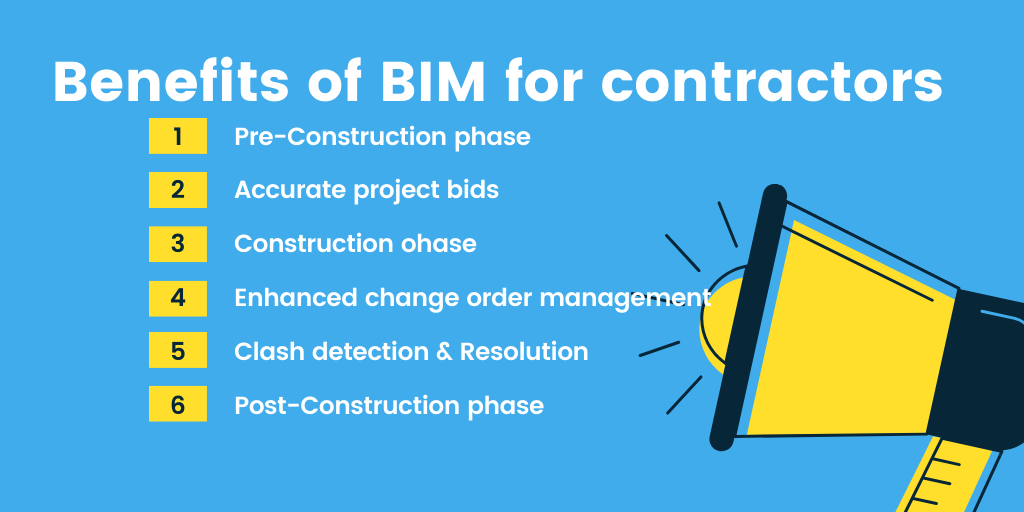Benefits of BIM for Contractors and Contracting Companies
BIM for contractors provides clear intent in bidding and throughout construction process. Now-a-days contractors are handling large infrastructure projects with ease using BIM. Innovative solutions and new services are being offered by contractors within their business models such as BIM Execution Plans, BIM Modeling, BIM Coordination and quality checks, quantity take-off reports, and work breakdown structures (WBS). Contractors are now having more insight and control over their construction projects.
In this blog post we will be highlighting the benefits BIM provides to contractors and sub-contractors so that you can decide whether it is right for you.
Benefits of BIM for Contractors
Pre-Construction phase
Coordinating with designers during pre-construction phase is essential to understand the design intent. BIM allows contractors to effectively coordinate with designers and project owners which is beneficial in conveying the right information and expectations using BIM. Accurate schedules and cost estimates can be done using BIM in less time. Actual visual representation for contractors helps them in managing risks and validate costs earlier. Design flows can be identified which is harder, expensive and labour intensive using 2D drawings and also contains lot of rework. BIM is the solution to all of these.
Accurate project bids
Contracting companies are required to estimate the cost of building materials, systems and equipment to develop a suitable bids. Manual procedures of estimation based on 2D quantity surveying are not that efficient in estimating accurate costs and requirements. The process is labour intensive, time taking and are prone to errors.
BIM helps contractors develop accurate bids by extracting quantities from BIM models thereby making it a faster and accurate process.
Construction phase
BIM models are referred as information resource during construction phase. Using this information, tasks can be assigned effectively and the BIM models can be used to actively monitor the construction progress by updating the BIM models. Contractors practice linking schedules with BIM models to report labour productivity and transparent construction progress.
Changes in BIM models are visible to whole team and fosters high degree of collaboration between contracting companies and sub-contractors. Now a days sub-contractors are also using information in the MEP and other installations including modular construction techniques.
Enhanced change order management
Traditional 2D solutions are not efficient in managing change orders as they are not intelligent in detecting modifications, additions, or subtractions in a project. BIM allows for change order management such as
- Create better insights for effective control of changes
- Present changes visually with quantities
- Isolate systems and components that are added, modified and changed
- Review quantities differences and validate change orders
- Verify cost submissions of sub-contractors using minimum resources
Clash detection and resolution
BIM allows contractors to detect clashes and conflicts in semi-automated and fully automated manner and allows contractors to visualize them to take better decisions. For example, BIM can tell you whether a HVAC duct is clashing with firefighting pipes or cable trays are clashing with chiller pipes, etc. automatically and any change can be rectified immediately.
Post-Construction phase
Most of the contractors offers maintenance services to the components they install during construction. BIM models provides important information such as location, size, install date, warranty date, manufacturer details, installer details, part number, model number, services routing, etc. It facilitates facility management and maintenance that helps in resolving issues quickly and efficiently.
BIM helps contractors and contracting companies to increase quality, productivity, efficiency, and safety of their projects. Errors can be minimized, rework can be saved, and costs can be saved. About 40% of contracting companies are reported to achieve the same using BIM.

